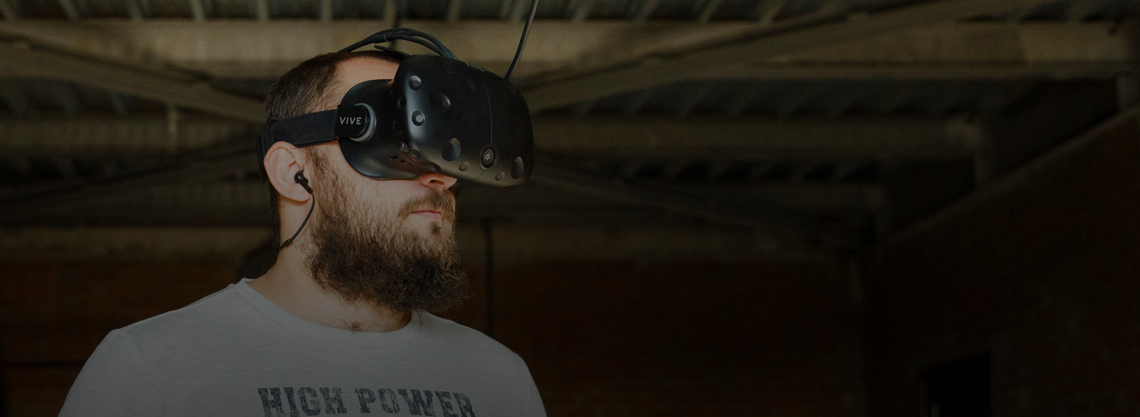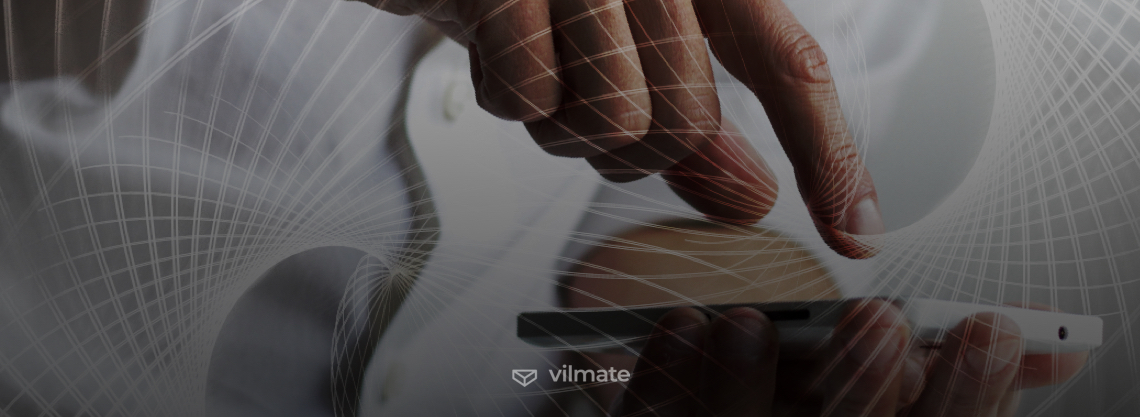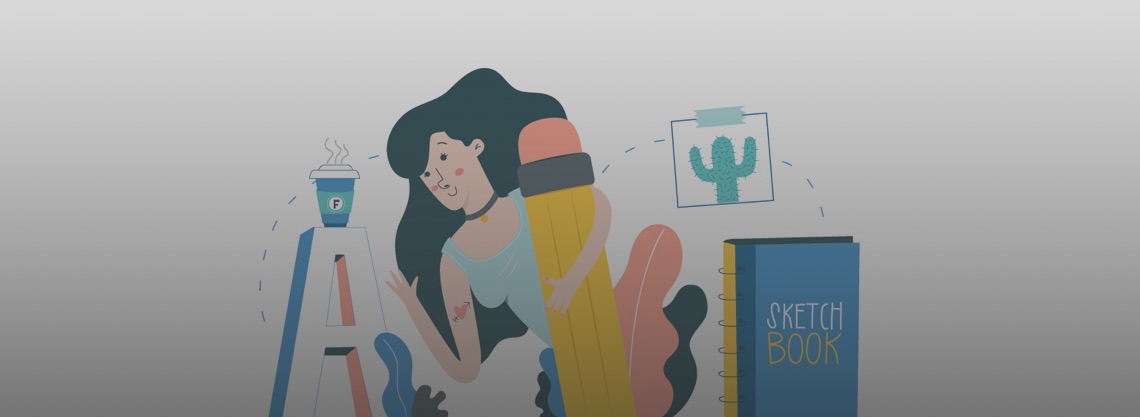Nowadays, technology is everywhere, and it keeps making its way into a wide range of legacy industries. Manufacturing, construction, and medicine — they are all no stranger to Information Technology anymore. Architecture is next in the queue. Although virtual reality for architecture is still something new, it is already becoming a well-established and well-understood part of the industry.
VR is, without any doubt, one of the hot new game-changing technologies. Whether it is for creating virtual life experiences or for creating meeting spaces for architects, virtual reality is a technology that will be coming to a lot of architecture conferences soon.
VR for architecture and design
Used by interior designers, architects, and real estate developers, virtual reality systems, and 3D visualization tools are perfect for creating mixed-reality spaces and immersive experiences for projects. Virtual reality can make it easier for people to navigate through buildings and provides a way for people to experience real projects in a whole new way.
Virtual reality is a new medium in architecture and design. It allows architects and designers to receive customer feedback so that it could be capitalized on before the project is finished.
That’s one of the primary objectives of using VR in architecture — making cooperation with clients or any other stakeholders and decision-makers more pleasant, fruitful, and rewarding for all the parties involved. The more variables there are in the design project, the more difficult it is to keep track of the changes.
As a result, virtual reality visualization is an efficient way to do the following:
- Communicate any changes
- Facilitate the right visual feedback
- Keep the user's attention
- Encourage immediate correction
- Reduce user frustration
- Reuse 3D models for marketing purposes
It is also worth mentioning that presently, VR is generally considered the new-generation architectural visualization method. It is a supporting method used in conjunction with 3D modeling and traditional scale models to create higher-quality structures. Compared to a standard scale model, VR is a much more effective mechanism of investigating the relationships between spaces. With VR, you can not only fancy what it’s going to feel like to be inside the projected area, but you will actually be able to experience the scale and proportion of the interior. So, what other competitive advantages does the VR approach have?
The benefits of VR for architecture and design
Virtual reality offers benefits that become visible very quickly and hit the design process with a significant punch: Design is fundamentally about the viewer. So, below, you will find a list of some of the most important advantages to consider when getting into virtual reality.
1. VR gives clients an opportunity to make their choices
Designing in a virtual world, architects or interior designers give their clients a chance to modify requirements on the fly. On a first approximation, this may seem similar to what the process used to look like decades ago. But in fact, what differs VR from traditional approaches is that placing an ordering customer into virtual reality, you can avoid endless revisions.
VR visualization is more detailed and representative. It gives a sense of scale and space that couldn’t be replicated in anything other than a VR project. Clients can thus pinpoint from the first try what they dislike about their design. They are free to make their choices, but this decision-making process turns out to be less painful for a designer who doesn’t have to iterate endlessly on the design revisions and a client feedback loop.
2. VR is an effective means to showcase design skills
An architecture or design portfolio is a standard way to show off your expertise and gain exposure. With the introduction of 3D rendering in virtual reality, portfolios have evolved, too. They’ve transitioned from paper to digital format, which has made them invaluable when pitching positions, raising funds, or presenting at events.
Using VR for a portfolio will signal a forward-looking attitude of an architect or a designer towards their craft to their future clients. This is how virtual reality is changing the way clients get to understand designers’ work and capabilities. Creating and maintaining an immersive VR portfolio, however, requires a lot of attention. This is why you should plan your VR portfolio well in advance and keep it up to date. This means that all your files should be uploaded to your virtual studio as 360° images. It’s also critical to learn the basics of generating 360° renders, as this skill will raise one in the estimation of colleagues and clients.
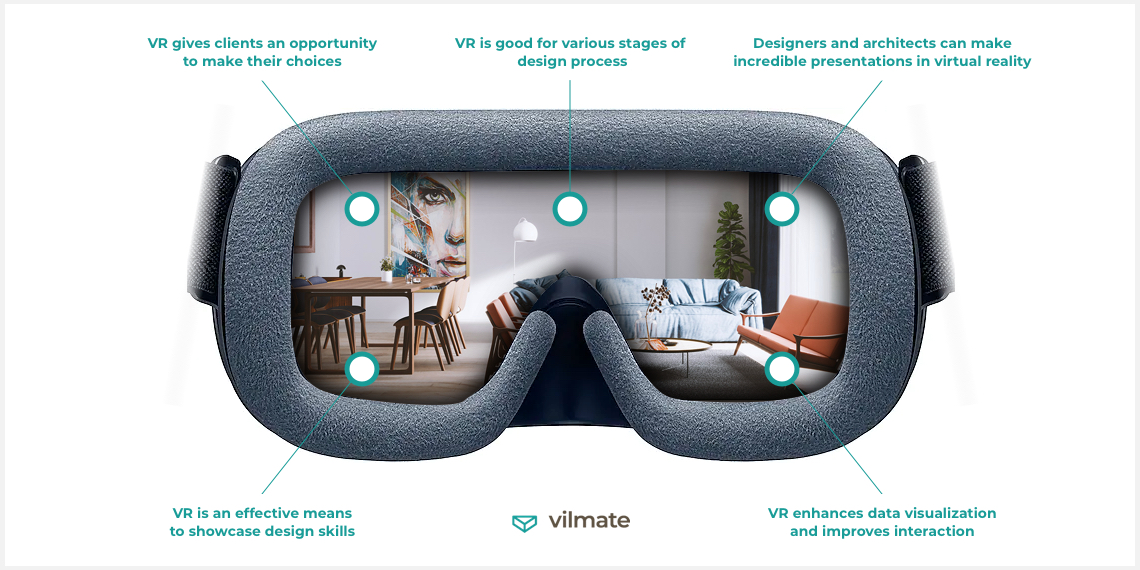
3. VR is good for various stages of the design process
Design mock-up creation, quick problem-spotting, and ongoing perfection is what planning mixed reality in architecture, design, and construction is going to render.
A significant advantage of VR is that it can render designs at different levels of detail. At early project stages, as clients move virtually through a design, they can see a non-photorealistic rendering that is nothing but an image demonstrating space and mass. With time and project development, the experience is becoming hyper-realistic, so a VR design gets to come with some background sounds and even more detail in the rendering. Besides, virtual reality visualization allows spotting the slightest problems that couldn’t be noticed in any other form of design presentation. Being “present” inside a designed space lets both clients and designers detect all sorts of issues, from trivial to significant ones, and resolve them when it’s still not too late.
4. Designers and architects can make incredible presentations in virtual reality
Virtual reality for architecture and design also means that there is a chance to enhance your presentations. Currently, there are an array of tools for helping designers and architects present their ideas and prototypes in Virtual Reality. These tools have the power to help designers and architects create presentations and then pitch their projects, both locally and remotely.
If a client or a partner has a complete VR setup and a stable Internet connection at home or at their office, it’s no problem to view that presentation from another place, another city, or even country. Unreal, Fuzor, Twinmotion, and Unity are some examples of VR tools for architecture and design. The architectural design workflow has also been greatly improved with the advent of remote meetings or presentations with clients, developers, and fellow architecture and design professionals using VR. And there will definitely be more great VR tools in the future!
5. VR enhances data visualization and improves interaction
Virtual reality can incorporate environmental and other relevant data into an electronic interface — all in a standard graphical format, much like a graphic browsing page. Currently, the method's greatest strength is the ability to create graphical plots that can include real-time data with or without timing and navigation support.
Virtual reality visualization in architecture is still in its infancy. Yet, a growing number of collaborative efforts using hardware and software can currently augment the ability of architects to visually display data in order to improve its understanding and inform decision making. The basic architecture uses simple tool technology to re-envision technology to make the visualization of data intuitive, accurate, and up-to-date. Once the viewer is immersed in the data, a powerful user interface can then display data visually that is otherwise inaccessible to them.
What is Archviz and how do VR architecture companies use it?
Archviz is a powerful professional VR visualization platform for virtual reality environments for architecture, interior design, and construction projects. ArchViz VR is an excellent way for a real-estate developer to show how a real-estate property will look without the necessity to be physically present there.
Interior design and architectural firms, as well as 3D companies, can benefit from Architectural Visualization by engaging such ArchViz VR services as:
- 3D Images
- 360° Video Walkthroughs
- Real-Time Rendering
- Real-Time Reflections
- On-demand 4K Quality
- Full-Scale User-Controlled Motion
The main advantage of ArchViz is that a potential real-estate buyer can see what his or her apartment, business center, or any other kind of property will look like. They can do that by using a VR headset or by watching 360-degree videos with a Google Cardboard.
ArchViz helps people solve the problem of visualizing the property they intend to invest in. The ability to see the place and walk around it provides a customer with a much richer experience than a regular design render. Skillful architectural visualization influences consumer purchasing decisions in a positive way.
One can say that ArchViz VR is the only tool that can immerse the client so deeply in the future property design, both at the construction stage and at the stage of negotiating the interior design.
With Archviz, users can experience, visualize, and take actions using virtual reality systems. These benefits are very attractive to many organizations. Archviz services are thus in demand among mostly U.S. and European architectural bureaus, design agencies, and private real-estate developers.
In fact, this is still a relatively young technology, but it’s sure to be soon able to replace the entire sector of 2D graphics for presenting real-estate projects.
Conclusion
Virtual reality is swiftly moving to the forefront of the agenda. In VR architecture, this transition is becoming noticeable, too. Virtual reality has the power to make the bright line between a real and unreal fade, and already now, people can see for themselves and actually experience how virtual reality is changing architecture.
Modeling virtual objects and interiors in VR can improve the experience of using, designing, and building for all those involved in projecting and buying property. The great field of virtual reality for architecture is full of possibilities, and exploring its full potential now will bring companies, designers, and clients profit with due time.
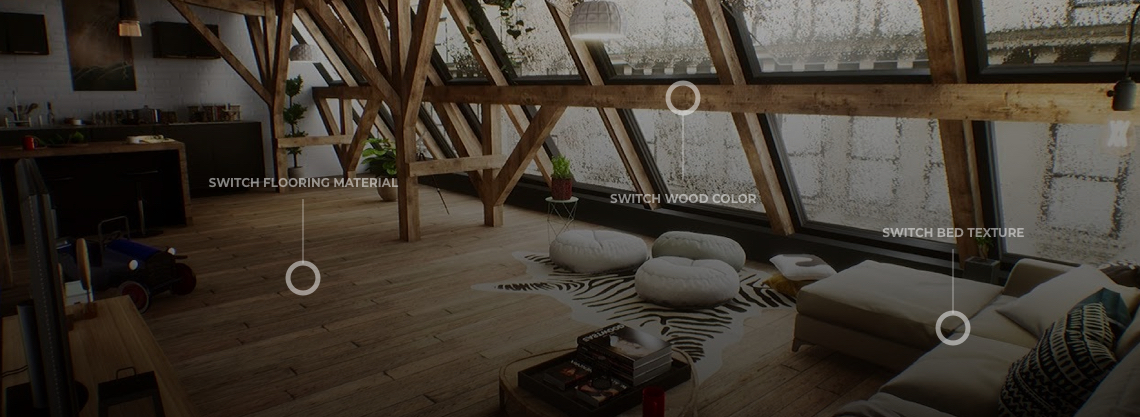
© 2020, Vilmate LLC

